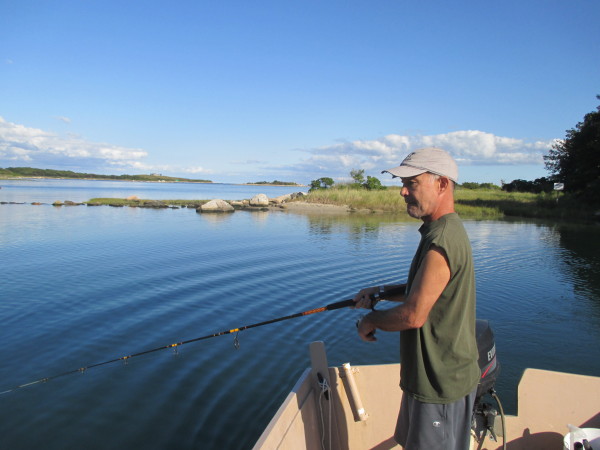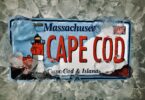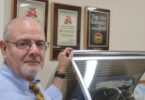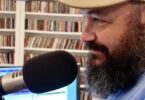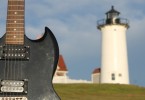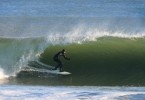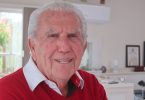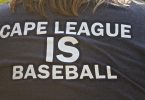WOODS HOLE – Somewhere between Ahab from “Moby Dick”, Santiago from “The Old Man and the Sea”, and Quint from “Jaws” lies Tuck Hayashi, who, ten years ago this week hooked a great white shark from his small teal skiff. He let the shark loose in minutes.
He’s never let the story go. How could he?
It’s the highlight of his life, said Hayashi, 63, of Falmouth. “You can’t top it,” he said.. “It’s a pretty good story.” (See the video.)
One afternoon in late September 2004 while chasing false albacore tuna in his 16-foot skiff, Hayashi, his girlfriend, Joanne Manning, and a friend he knew from playing
music, Drew Colella, entered a lagoon of Naushon Island, a private island owned by the Forbes family.
“That first day and every day thereafter were the most beautiful of the summer,” recalled Hayashi. “There was one rainy day in that two-week stretch.”
Near Hadley Harbor, Lackey’s Bay, and the west gutter, there is a small bridge there, and he saw birds flying on the other side of the bridge – in the lagoon he had been in many times. He had already seen false albacore jumping, and then they had disappeared. He knew they went somewhere. He figured the birds were a sign that albacore were in the lagoon.
One thing was a bit unusual. On the bridge, he saw eight people just standing there.
“They were all adults,” recalled Hayashi. “I was expecting to see someone walking around with carafe of sangria. By the fact it was eight adults, all rich people, in the middle of the afternoon, I figured they were having a cocktail party. But that wasn’t the case.”

